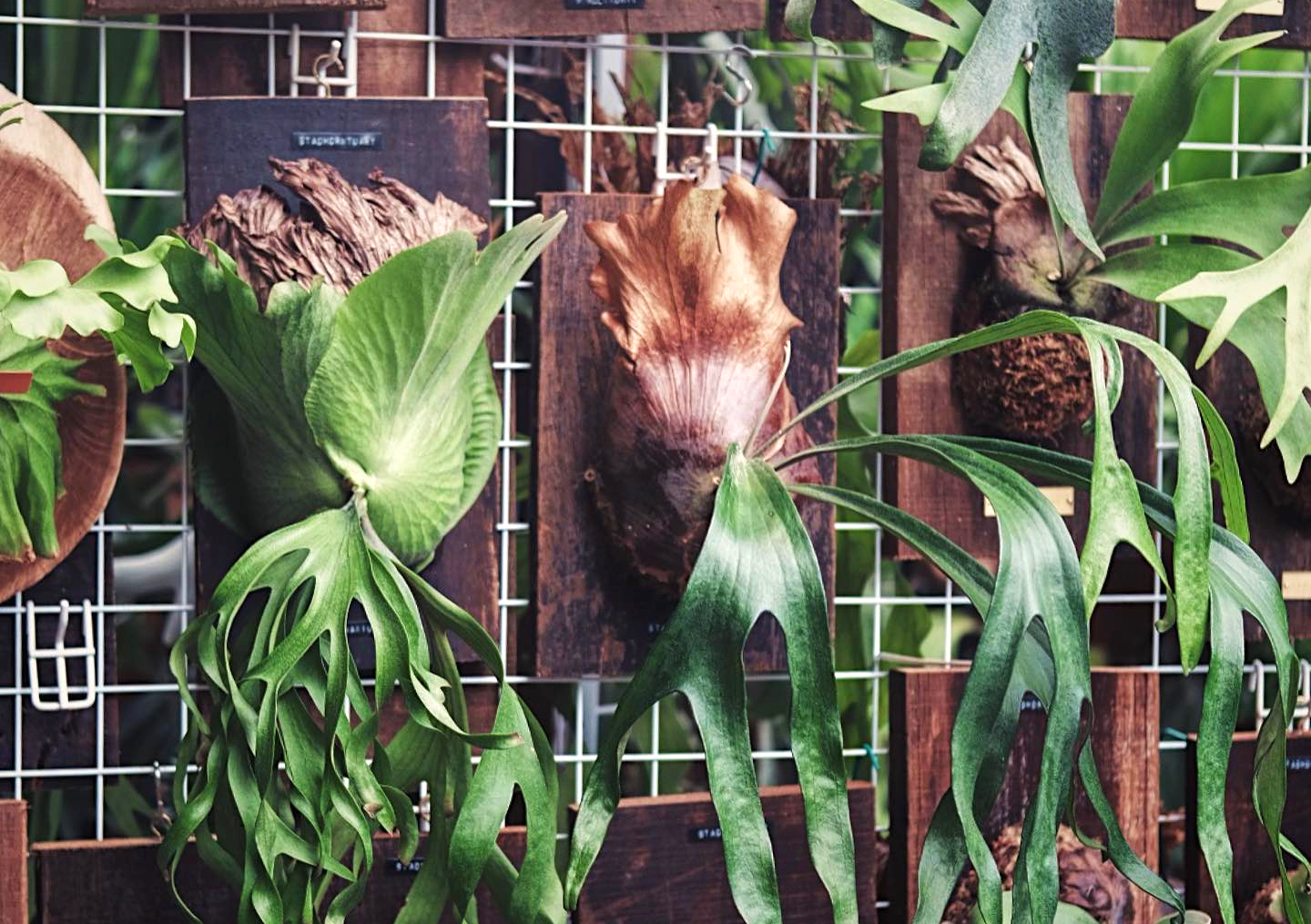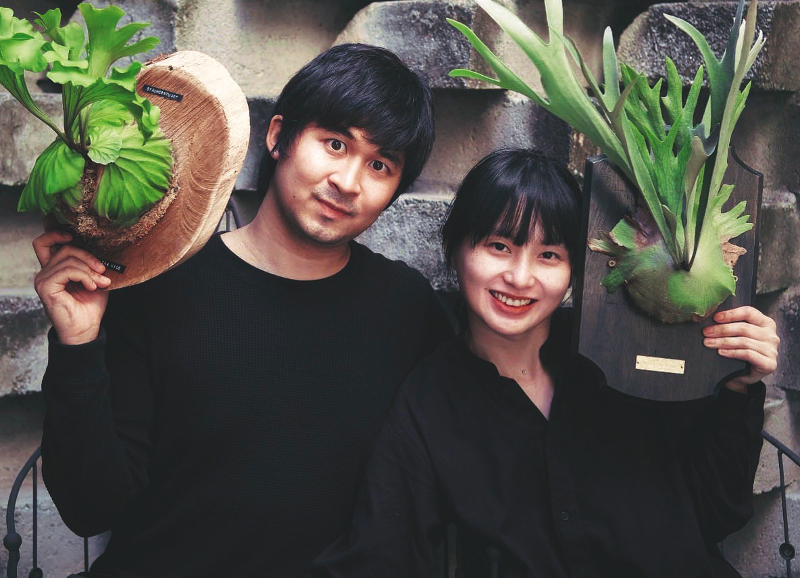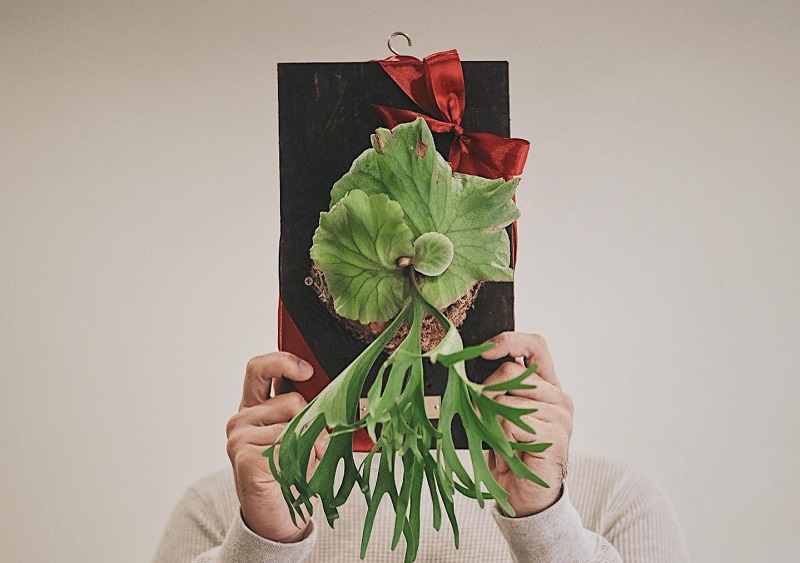
Founder Key Wong has mounted more than 1,000 platyceriums in one year (All photos: Staghorntuary)
Having just settled into her new home, Key Wong wanted to add more life into it with greenery. Living in a condominium, however, had its limitations when it came to growing plants. Together with her partner Syun Hattori, they discovered staghorn ferns.
They chanced upon a wilting staghorn fern, known scientifically as platycerium, at a local nursery. “The condition of the plant was quite bad, but its exotic look attracted us so much that we decided to bring it home,” Wong says.
Adamant on rescuing the plant, she researched how to care for it. “I have learnt that some ferns are epiphytes, which means they grow on other plants so the roots and fronds receive plenty of air circulation. Most of the pot-planted staghorn ferns are out of shape due to their distressed position and how they are grown. That’s how we got the idea to start selling mounted staghorn ferns.”
The couple launched Staghorntuary — a portmanteau of the words staghorn and sanctuary — on Christmas Eve 2020. They chose the name as they aimed to build a haven for staghorn ferns. “It’s a place where we nurture this not commonly known and underappreciated plant and put it in the spotlight via our personal touch.”
While it may be easier to grow the plants in pots, this was not Staghorntuary’s focus. The process of mounting the staghorns acts as a creative outlet for Wong and Hattori.
founders_new.jpg

Wong mounted more than 1,000 platyceriums in one year. Although she watched online videos to learn about mounting, it is the hands-on experience that helped hone her skills.
“There are online videos on mounting, but most of them are very brief and simple. So, many important skills are discovered and acquired during my non-stop mounting process. You must do it yourself and find out what is right and wrong and amend accordingly.
“When it comes to mounting, the correct orientation plays a very crucial role for the growth of the plant. We will make sure all of these are properly done by us before handing them to our customers. Their job now is to focus on taking care of and growing the plant,” Wong adds.
The pandemic has prompted many people to take up new hobbies, including ones they never thought they would be interested in. A popular one is growing houseplants, and Wong and Hattori welcomed many first-time plant parents.
ferns_presents.jpg

They first explain the staghorn fern’s anatomy to customers to ensure they have an idea of how to handle the plant. Although staghorn ferns are easy to care for in general, Wong and Hattori make sure that customers have the ideal environment to grow the plants. “We don’t encourage them to buy if the spot they describe isn’t suitable for staghorn ferns,” Wong says.
Staghorntuary produces new batches every week. It also accepts customised orders from customers who want to choose the fern species and mounting medium. “Some of the criteria we take into consideration when choosing the fern species are the difficulty in growing it, price, appearance and maturity.” Mounting services are provided for staghorn fern owners who wish to give their plant a new look.
The wood and plants are sourced locally. Wong and Hattori favour vintage woods as not only are they sustainable — they are reused and repurposed from old buildings, flooring or construction discards — but also attractive to the eye. “They have been our preference since day one because of their rustic and old-fashioned look that gives a unique and ageless charm to our crafts,” Wong informs.
hammer.jpg

Staghorntuary takes pride in its attention to detail when mounting the staghorn ferns. Every element, including the staghorn, wood, metal tag and string, right down to the smallest accessories such as the screw and hook, is carefully selected. “The first step will be choosing the plant. Then, we will pair it with a mounting material that suits its size and shape. It is also important to visualise the outcome to make sure it looks fantastic.”
Starting a business is tough, what more during a pandemic. As a mounted staghorn fern business is rather unusual in the local market, the uncertainty over whether it would succeed kept the owners awake at night in the beginning. “Even when people turned to plants during lockdowns, staghorn ferns were not in demand. I was not confident at first, but my partner encouraged me to keep going,” Wong says.
After running the business from home since its inception, Staghorntuary will open a store in Bangsar later this May. She says the brand aims to create awareness of and develop interest in the beauty of platyceriums among plant enthusiasts and the public. Just as no two staghorn ferns are alike, Wong and Hattori want their customers to feel as special and unique as the “living sculptures” from Staghorntuary.
This article first appeared on Mar 14, 2022 in The Edge Malaysia.


